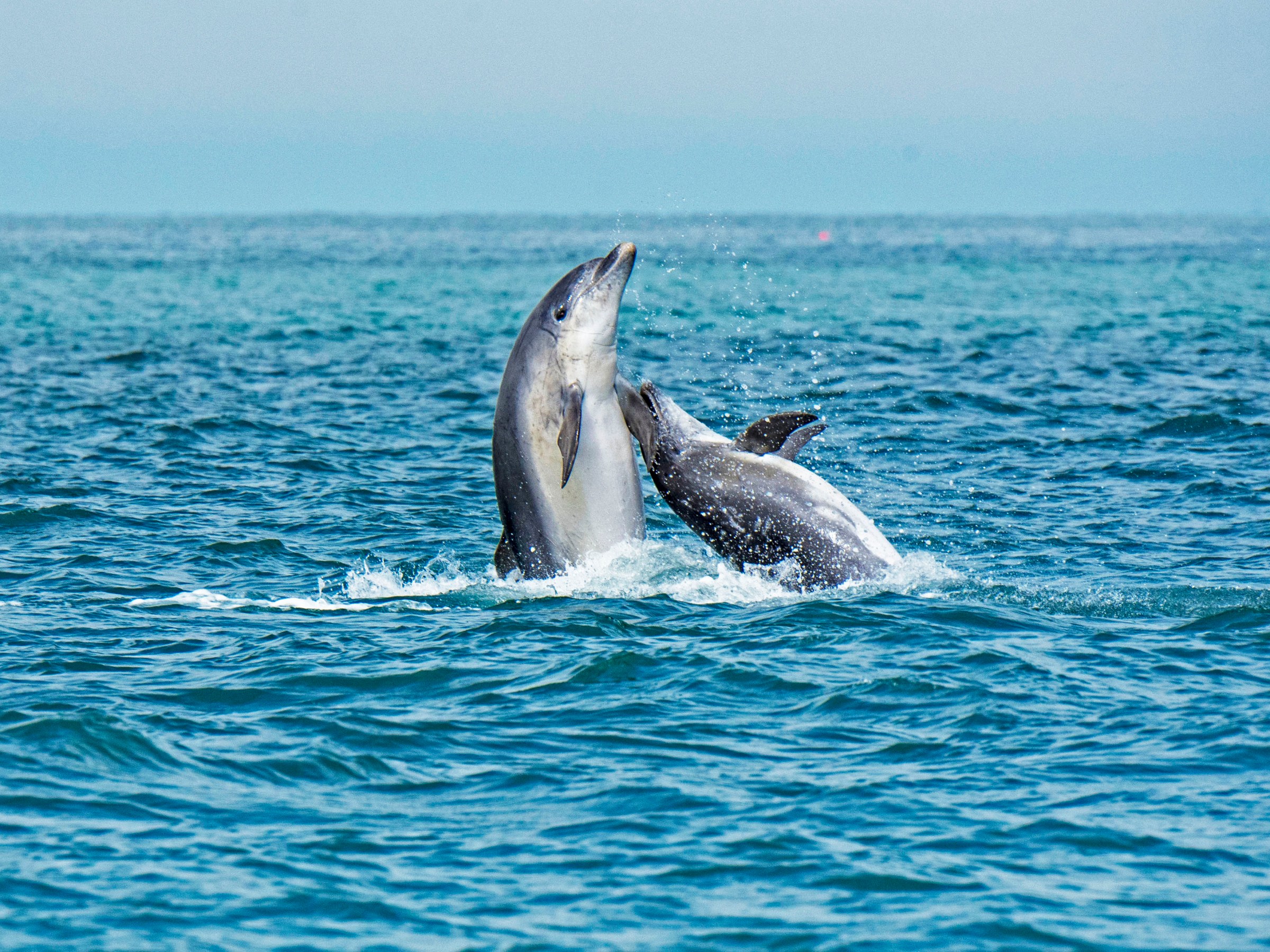The female Bottle Nosed Dolphin can grow to approximately 3.5M with the male reaching 4.0M. They can live for up to 40 years although dolphins of 50 years have been known. The females breed every 2 to 3 years between March and September and have a gestation period of 12 months, giving birth between March and September the following year. This also coincides with the best feeding time in Cardigan Bay.
The calf is usually around 1.0M to 1.30M in length at birth and will nurse from the mother for 18 months to two years. Dolphin calves do not leave the mother for up to 6 years but will usually be quite independent after about 3 years. When newly born, the calf will have floppy fins which will stiffen up over a few weeks. The calf will also have deep folds over its body that are the result of feotal folding but these folds disappear with time, leaving the calf smooth.
During nursing, the mother will feed the calf from her abdominal mammary slits. Suckling will last for only 5 or 10 seconds at a time and can happen up to 8 times an hour for the first few weeks. The milk has a high fat and protein content with traces of lactose, which helps the calf build up a good layer of blubber within the first few weeks. Dolphins have been recorded diving to about 300M but will generally stay close to the surface for ease of breathing.
Although Dolphins can hold a breath for 13 to 16 mins, they will usually breath every few minutes. They hunt by echolocation, sending ultrasounds through the water. The sound is bounced back off an object and is received by an organ called the mellon located on top of the Dolphin’s head. They communicate by making very high pitched clicking and squeaking noises. They can also use these clicks and squeaks to stun their prey. They usually swim about 10 to 15km an hour but can reach speeds of about40km per hour.
They are mammals and have a core temp of 36°C and to maintain this temp they are covered in a thick layer of blubber that insulates against the cold. They can hunt as a solitary animal or as a team. Their brains are bigger than ours by about 300g and all dolphins are actualy members of the Porpoise family. The dolphins are photo identified by their dorsal fin as every fin is different.
Exhibiting unique rake marks and nicks, the fin is like a finger print and in Cardigan Bay this form of identification is carried out by the SeaWatch Foundation from our vessels. There are approximately 250 identified dolphins in Cardigan Bay!






